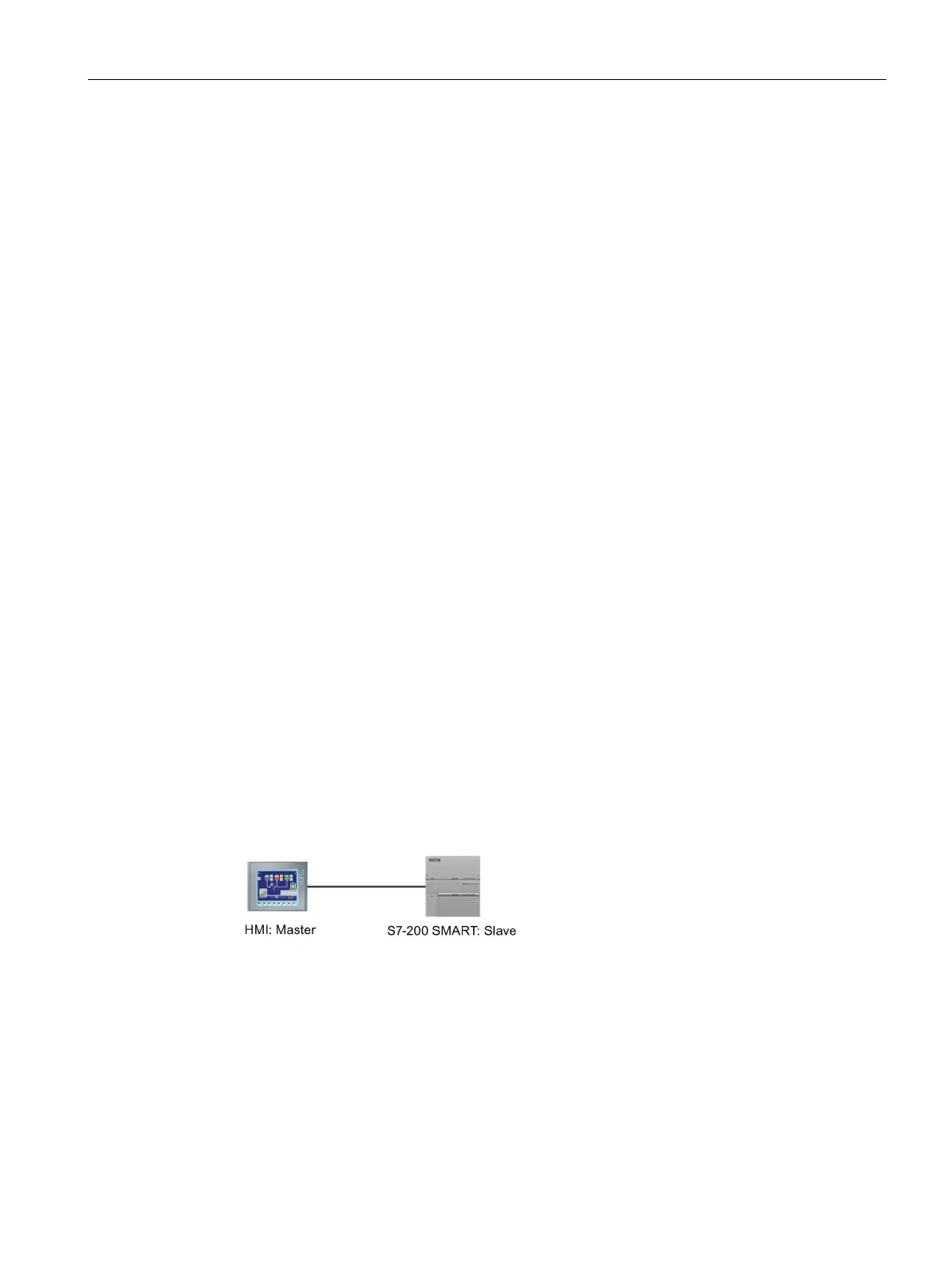Communication
8.6 RS485
S7-200 SMART
System Manual, 09/2015, A5E03822230-AC
395
An RS485 network is a differential (multi-point) network and can have up to 126 addressable
nodes per network and up to 32 devices per segment. Repeaters are used to segment the
network. Repeaters are not addressable nodes; therefore, they are not included in the count
of addressable nodes, but are counted in the devices per segment.
RS485 allows for data transfer at a high speed (from 100 m at 12 Mbit/s to 1 km at 187.5
Kbit/s).
RS485 can operate with the PPI protocol and Freeport:
● PPI protocol: Can operate on RS485 or RS232 (half-duplex). Possible connections
include:
– PPI protocol devices
– RS485 HMI displays
● Freeport: Can operate on RS485 or RS232 (half-duplex). Possible connections include:
– RS485-compatible devices (for example, a bar code scanner)
– Devices that have RS485 interfaces (for example, a control system)
– Third-party devices using Freeport
– Modems
PPI is a master-slave protocol: the master devices send requests to the slave devices, and
the slave devices respond. See the following figure. Slave devices do not initiate messages,
but wait until a master sends them a request or polls them for a response.
Masters communicate to slaves by means of a shared connection which is managed by the
PPI protocol. PPI does not limit the number of masters that can communicate with any one
slave; however, you cannot install more than 32 masters on the network.

